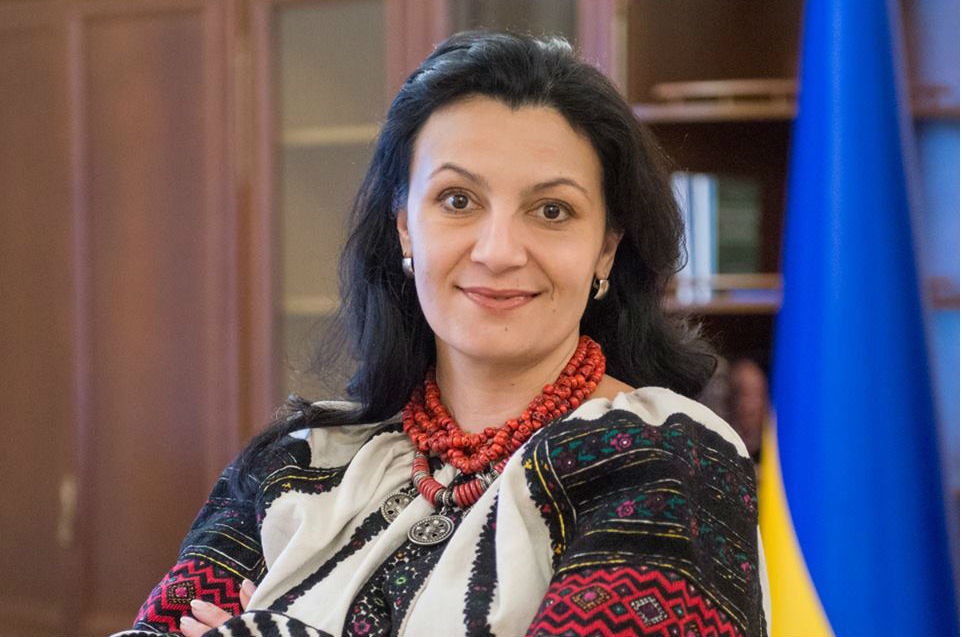 Women’s rights have made major strides in Ukraine since 2014. In particular, elevating the coordination of the government’s gender equality policies to the office of the Vice Prime Minister for EU and Euro-Atlantic Integration, Ivanna Klympush-Tsintsadze, has led to real breakthroughs.
Women’s rights have made major strides in Ukraine since 2014. In particular, elevating the coordination of the government’s gender equality policies to the office of the Vice Prime Minister for EU and Euro-Atlantic Integration, Ivanna Klympush-Tsintsadze, has led to real breakthroughs.
In eleven short months, Klympush-Tsintsadze—who has been charged with gender equality—has been remarkably effective, acting as a model of government collaboration. She has worked with the Equal Rights Caucus in the Rada, as well as with international donors and Ukrainian civil society leaders. When hiring a new commissioner for gender equality for her office, Klympush-Tsintsadze invited representatives from international organizations to observe the interviews, and asked civil society advocates to recommend their preferred candidate.
In November, she encouraged male ministerial colleagues to attend a conference organized by the Rada’s Equal Rights Caucus on “Gender Equality and Politics” to learn about the effects of the glass ceiling on their female colleagues and subordinates. Many returned to their ministries with a willingness to investigate and learn about gender discrimination’s effects on staff morale and effectiveness.
“She is the light in the tunnel,” says Natalya Karbowska, president of Ukrainian Women’s Fund. And Maryna Rudenko of UN Women adds that she is universally praised for her transparency and inclusivity.
But as Klympush-Tsintsadze herself acknowledges, Ukraine was already experiencing the convergence of a number of important forces, even prior to her appointment. For example, Prime Minister Volodymyr Groisman has been supportive; when women leaders approached him with the idea of elevating the coordination of women’s rights policies to the highest offices of the government, he did not hesitate.
Additionally, the drive and determination of Ukrainian women in the past established a firm foundation; they convened civil society, called out inequities, and effectively lobbied for change. The legacy of the Euromaidan, where every individual played a powerful role, has also been instrumental for gender equality. “We stand on their shoulders,” Klympush-Tsintsadze observes.
And there has been increasing recognition, backed by data and research, that gender equality improves economic growth, and that women’s inclusion in peace negotiations increases the odds of their success. According to Klympush-Tsintsadze, evidence from the Nordic countries that feminist policies uplift everyone has been persuasive in Ukraine, as the country looks to turn its economy around and achieve peace.
While gender equality mostly emerges from a happy set of circumstances, Klympush-Tsintsadze has noted the role of the war and Russian aggression in the government’s elevation of women’s issues. Ukrainians have had to face open aggression and violence against women like never before; 66 percent of Ukraine’s 1.6 million displaced are women, and the reports of gender-based violence from the war zone have been horrifying.
Given this context, Klympush-Tsintsadze and her collaborative public-private coalition have achieved several successes.
During the initial phases of the war in the east, women stepped up to fill critical gaps when the Ukrainian Army, hollowed out by corruption, stumbled. These contributions were highlighted in Maria Berlinska’s 2017 film, “Invisible Battalion,” which documents the lives of Ukrainian women combatants on the front and rear lines of the Donbas war. In 2017, their efforts were formally recognized when the Ministry of Defense expanded the ability of women to serve in the armed forces in sniper, logistics, and intelligence billets—positions many women were already performing informally, but can now receive compensation for.
The Ministry of Interior is in the forefront of mainstreaming gender equality policies in its ministries through the appointment of gender advisers; the Ministry of Defense is just a step behind, reviewing gender adviser responsibilities before fully implementing the reform.
Additionally, the government of Ukraine is fulfilling two key international agreements on gender equality: the Convention to End Discrimination Against Women (CEDAW), and the National Action Plan (NAP) to implement UN Security Council Resolution 1325 on Women Peace and Security. In February 2017, the United Nations heard a shadow report from Ukrainian civil society on CEDAW’s implementation, which the Ukrainian government is taking into consideration.
The government’s current focus for advancing CEDAW is training justice officials on laws regarding gender-based violence, and members of the armed forces on gender-based violence in the war zone. In addition, the Ukrainian government is headed for a mid-term review of its NAP; it is one of the only countries in the world implementing a NAP—which is focused on the role of women in building peace—in the midst of war. By 2019, the government hopes to move from donor-supported implementation of the NAP to government funded.
And in December 2017, the Ministry of Health repealed Order 256, which banned women from employment in 450 professions that were considered risky for women’s reproductive health. A legacy from the Soviet period, the order prevented women from being employed as truckers, carpenters, and firefighters, among others. In reality, Ukrainian women were already doing these jobs, but weren’t being compensated for them.
What’s next on the gender equality agenda in Ukraine? According to Ella Lamakh, who is with the Democracy Development Center in Kyiv, the government needs to integrate a gender perspective into its major reforms, including decentralization, health care, and others. It is hoped that this will be a key responsibility of the new gender commissioner, Kateryna Levchenko, as women leaders look to consolidate their successes and further advance gender equality.
Lauren Van Metre is a professor at George Washington University’s Elliott School of International Affairs and has supported peace processes in the Balkans and Eastern Europe while at the State Department, Department of Defense, and the US Institute of Peace. She tweets @resilienceworks.
Image: Ivanna Klympush-Tsintsadze is the Vice Prime Minister for EU and Euro-Atlantic Integration. Credit: Creative Commons/Chelmiee
